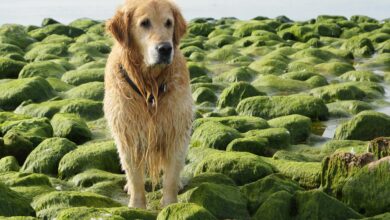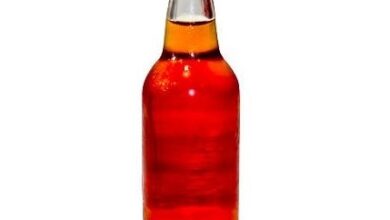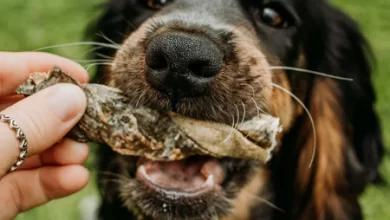Can Dogs Eat Ravioli? A Complete Guide for Pet Owners-2024

Can Dogs Eat Ravioli? Let’s talk about this popular pasta dish and whether it’s safe for your furry friend. Ravioli is pasta stuffed with fillings like cheese, meat, or veggies and often topped with rich sauces. While it’s a delicious treat for humans, it might not be the best option for dogs.
The ingredients in ravioli, especially garlic, onion, or heavy sauces like marinara or Alfredo, can harm your dog’s health. Understanding what’s in ravioli is key to deciding if it’s safe to share. Let’s break it down so you can make the best choice for your pup! So, let’s find out that- Can Dogs Eat Ravioli?
Are the Ingredients in Ravioli Safe for Dogs? Can Dogs Eat Ravioli?
Can Dogs Eat Ravioli? When it comes to ravioli, the safety for dogs largely depends on the ingredients inside. While some simple fillings might be safe, others could cause stomach upset or more serious health issues. It’s essential to consider each ingredient carefully before sharing ravioli with your pet.
1. Meat and Vegetables: Safe in Moderation
Plain meat or unseasoned vegetables in ravioli can be safe for dogs in small amounts. These simple ingredients are often easy for dogs to digest and provide some nutrition. However, too much can lead to digestive problems, so it’s important to feed them in moderation.
- Plain cooked chicken, beef, or turkey is fine for dogs, as long as it’s unseasoned.
- Vegetables like spinach or carrots, used in some ravioli fillings, are generally safe for dogs.
2. Cheese-Filled Ravioli: Not Ideal for Lactose-Intolerant Dogs
Cheese-filled ravioli may pose a problem for dogs, especially for those who are lactose intolerant. Dairy products can lead to upset stomachs, diarrhea, and discomfort in dogs that can’t properly digest lactose.
- Small amounts of cheese may be okay for some dogs, but it’s better to avoid cheese-filled ravioli.
- For lactose-intolerant dogs, cheese can cause bloating, gas, and stomach cramps.
3. Garlic, Onions, and Spices: Toxic for Dogs
One of the most concerning aspects of ravioli is the seasonings. Garlic and onions, both common in ravioli sauces or fillings, are toxic to dogs. These ingredients can lead to serious health issues, including anemia, and should always be avoided.
- Garlic and onions in any form (raw, cooked, or powdered) are harmful to dogs.
- Spices and salt can cause digestive issues, dehydration, or even more severe reactions in sensitive dogs.
Can Dogs Eat Ravioli? While some ingredients in ravioli may be safe for dogs, many common fillings, sauces, and spices can be harmful. Always check what’s inside before deciding to share ravioli with your pet.
Risks of Feeding Ravioli to Dogs
Can Dogs Eat Ravioli? Feeding your dog ravioli may seem like a tasty treat, but it comes with several risks that pet owners should be aware of. The ingredients in ravioli, especially when combined with sauces and seasonings, can cause health problems ranging from mild upset stomachs to more severe conditions. It’s important to understand these potential dangers before offering ravioli to your dog.
1. High Salt Content: Risk of Dehydration or Sodium Poisoning
One of the major concerns with ravioli, especially store-bought varieties, is its high salt content. Excessive sodium intake can lead to dehydration and, in extreme cases, sodium poisoning. Dogs are much more sensitive to salt than humans, and too much can cause a range of health issues.
- Symptoms of sodium poisoning include vomiting, diarrhea, excessive thirst, and lethargy.
- Consuming too much salt over time can lead to kidney damage or high blood pressure in dogs.
2. Garlic and Onion: Toxic to Dogs
Garlic and onions, common seasonings in ravioli sauces, are highly toxic to dogs. Even small amounts of these ingredients can cause damage to a dog’s red blood cells, leading to hemolytic anemia. This condition can weaken your dog and require urgent medical attention.
- Garlic and onion, whether raw, cooked, or powdered, should never be given to dogs.
- Symptoms of garlic or onion toxicity include lethargy, weakness, and dark-colored urine.
3. High Fat Content: Risk of Pancreatitis
Can Dogs Eat Ravioli? Ravioli filled with cheese or smothered in rich sauces can be very high in fat. While a small amount of fat is fine for dogs, too much can lead to pancreatitis, a painful condition where the pancreas becomes inflamed. Pancreatitis can be life-threatening and requires immediate veterinary care.
- Symptoms of pancreatitis include vomiting, loss of appetite, abdominal pain, and lethargy.
- Dogs with pre-existing health issues or older dogs are more susceptible to pancreatitis.
Can Dogs Eat Ravioli? While ravioli might be a tempting treat for your dog, its risks outweigh the benefits. The high salt, harmful seasonings, and fatty content can cause serious health problems, so it’s best to avoid sharing this dish with your pet.
What to Do If Your Dog Eats Ravioli
Can Dogs Eat Ravioli? If your dog has snatched a piece of ravioli or eaten a full serving, it’s important to assess the situation carefully. While an occasional small amount of plain pasta may not cause immediate harm, ravioli often contains ingredients that can be toxic to dogs. Knowing how to respond can help prevent any serious health issues.
1. Check the Ravioli Ingredients and Portion Consumed
First, take note of the type of ravioli your dog ate. The ingredients used—especially garlic, onions, cheese, and sauces—can affect your dog’s health. Assess how much your dog has eaten and what kind of ravioli it was.
- Plain pasta with no seasonings or sauce is less of a concern than ravioli with cheese, garlic, or rich sauces.
- If your dog ate a large portion or if the ravioli contained harmful ingredients, monitor them closely for signs of illness.
2. Watch for Symptoms of Illness
After your dog eats ravioli, observe them for any signs of discomfort or adverse reactions. Common symptoms that may arise from eating ravioli include vomiting, diarrhea, or lethargy. These symptoms may occur if the ingredients are hard for your dog to digest or if they’re reacting to toxic substances.
- Signs to watch for include stomach upset, excessive drooling, and lack of energy.
- If your dog starts showing these signs, it’s crucial to act quickly to avoid further complications.
3. Contact Your Vet if Symptoms Persist
If your dog begins to exhibit symptoms like vomiting, diarrhea, or lethargy, or if you suspect they’ve consumed something toxic, contact your vet immediately. It’s always better to err on the side of caution. Your vet can provide advice on how to treat your dog, or if necessary, ask you to bring them in for an examination.
- Early intervention can help avoid more serious health issues like dehydration or pancreatitis.
- In severe cases, your vet may recommend treatments like inducing vomiting or administering fluids to counteract dehydration.
Can Dogs Eat Ravioli? If your dog eats ravioli, it’s important to assess the situation carefully. Keep an eye on any symptoms, and don’t hesitate to contact your vet if you notice signs of discomfort or illness.
Safe Alternatives to Ravioli for Dogs
Can Dogs Eat Ravioli? While ravioli may be tempting to share with your dog, there are safer alternatives that can satisfy their cravings without the risk of harmful ingredients. Choosing the right treats or meals for your dog is key to maintaining their health while still indulging their taste buds. Fortunately, there are dog-friendly options that mimic the texture and taste of ravioli but without the risks associated with traditional pasta dishes.
1. Offer Plain, Cooked Pasta Without Sauces or Seasoning
If your dog loves pasta, you can give them small amounts of plain, cooked pasta as a treat. Just be sure to skip any sauces, seasonings, or added ingredients that could be harmful.
- Plain pasta without butter, cheese, or sauce is the safest option.
- Serve it in moderation to prevent stomach upset.
- Make sure the pasta is fully cooked and cut into small, digestible pieces.
2. Use Dog-Friendly Treats with Similar Textures
You can mimic the texture of ravioli by offering treats that your dog will enjoy, like pumpkin puree wrapped in dog-safe treats. This provides a satisfying chew while being gentle on their digestive system.
- Try dog-safe wraps filled with healthy ingredients like pumpkin, sweet potato, or lean meats.
- These treats are usually easier for dogs to digest and are low in harmful seasonings.
3. Make Homemade Ravioli with Dog-Safe Ingredients
For a fun twist, you can try making homemade ravioli using dog-friendly ingredients. Use simple, safe fillings like lean meats (such as chicken or turkey) and rice, ensuring there are no added seasonings or harmful spices.
- Homemade ravioli gives you full control over the ingredients.
- Use dog-safe fillings and ensure the dough is plain with no harmful additives.
- Serve in small portions as a special treat.
Can Dogs Eat Ravioli? While traditional ravioli is not ideal for dogs due to its ingredients, there are many safe alternatives to choose from. Whether it’s plain pasta, dog-friendly wraps, or homemade ravioli, you can offer tasty treats that are better for your dog’s health. Always remember to serve any treat in moderation and avoid adding anything that could upset their stomach.
Tips for Keeping Your Dog Safe Around Ravioli
Can Dogs Eat Ravioli? Ravioli can be tempting to share with your dog, but certain ingredients and seasonings make it potentially harmful. To keep your furry friend safe, it’s essential to take precautions and discourage access to foods that aren’t suitable for their diet. Below are some key tips to help you ensure your dog stays healthy and happy, even when you’re eating ravioli.
1. Avoid Leaving Ravioli Unattended
Never leave ravioli or any other human food within easy reach of your dog, especially if it contains harmful ingredients like garlic, onion, or high-fat sauces.
- Keep the ravioli out of reach on counters or tables to prevent accidental ingestion.
- If you’re eating ravioli, be mindful of where you place your plate so your dog can’t access it.
- Use baby gates or crates if necessary to ensure your dog’s safety.
2. Train Your Dog to Avoid Begging for Table Scraps
Teaching your dog not to beg for table scraps can help prevent them from eating something harmful like ravioli.
- Set clear boundaries by not offering food from your plate.
- Use commands like “leave it” or “sit” to redirect their attention away from your food.
- Reinforce good behavior with treats or praise so they learn to respect your space during meal times.
3. Stick to Dog-Specific Food and Treats
To ensure your dog’s health and safety, stick to providing food that is specifically formulated for canine nutrition.
- Choose high-quality dog-specific treats and meals that don’t contain harmful additives or seasonings.
- Be cautious of human food that may be appealing to your dog but could cause digestive upset or toxicity.
- Opt for healthy alternatives like plain cooked meats, vegetables, or commercial dog treats designed for their nutritional needs.
Can Dogs Eat Ravioli? By taking these precautions, you can avoid potential dangers and ensure that your dog remains happy and healthy even when you’re enjoying ravioli or other tempting human foods. Always prioritize your dog’s dietary safety and provide treats or meals that are specially made for their needs.



